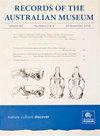Evolutionary history of the subgenus Mus in Eurasia with special emphasis on the House Mouse Mus musculus
IF 0.8
4区 生物学
Q4 ZOOLOGY
引用次数: 0
Abstract
Elucidation of the evolutionary history of the subgenus Mus, including the House Mouse Mus musculus, is essential to understanding species diversification mechanisms in the Indomalayan region, which is a global biodiversity hotspot. In terms of interspecific relationships, the topography of India, Myanmar, and other Southeast Asian regions has been proposed to explain the speciation process and ecological niche diversification followed by range overlap after speciation. Recent research into mitochondrial DNA clocks has created the opportunity to reconstruct the detailed dynamics of M. musculus as affected by human activity. The resultant evolutionary scenarios are in good accordance with archaeological evidence observed in Asia, especially in China, Korea, and Japan.欧亚大陆小家鼠亚属的进化历史,特别强调家鼠小家鼠
阐明Mus亚属(包括家鼠Mus musculus)的进化史,对于理解Indomalayan地区的物种多样化机制至关重要,Indomalaya地区是全球生物多样性热点。在种间关系方面,印度、缅甸和其他东南亚地区的地形被提出来解释物种形成过程和生态位多样化,然后是物种形成后的范围重叠。最近对线粒体DNA时钟的研究为重建受人类活动影响的肌肉分枝杆菌的详细动力学创造了机会。由此产生的进化场景与在亚洲观察到的考古证据非常一致,尤其是在中国、韩国和日本。
本文章由计算机程序翻译,如有差异,请以英文原文为准。
求助全文
约1分钟内获得全文
求助全文
来源期刊
CiteScore
0.90
自引率
0.00%
发文量
9
审稿时长
>12 weeks
期刊介绍:
Records of the Australian Museum, volume 62 was published in 2010, volume 63 in 2011. Monographic works of particular significance are published irregularly as Records of the Australian Museum, Supplements (ISSN 0812-7387).

 求助内容:
求助内容: 应助结果提醒方式:
应助结果提醒方式:


